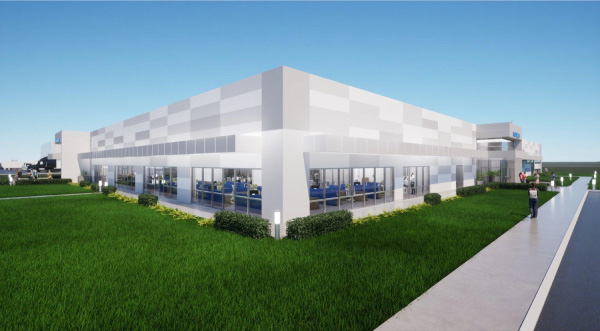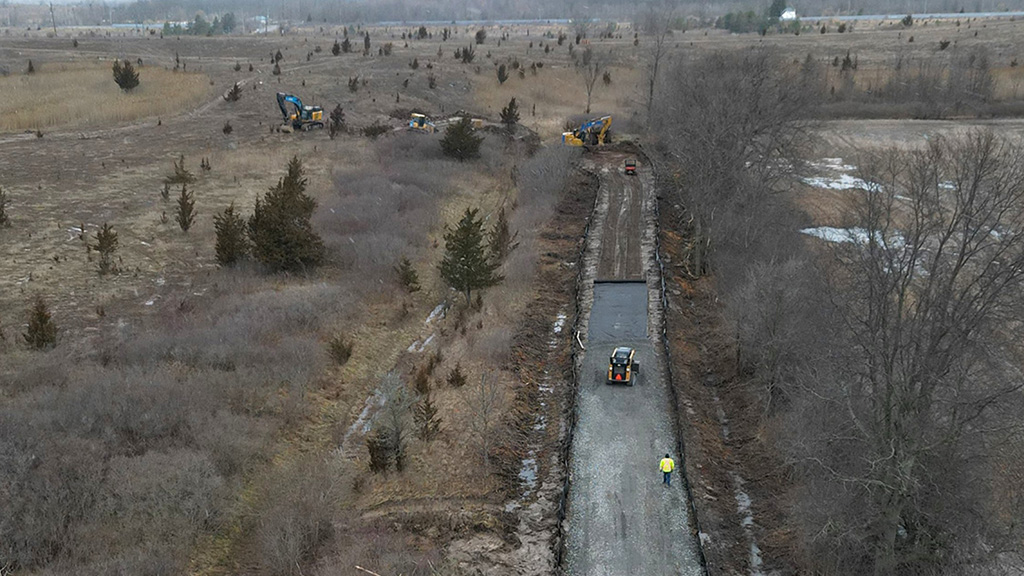A key player in the effort to convince Japan’s Asahi Kasei to spend $1.6 billion to build its new lithium-ion battery separator plant in Port Colborne, Ont. says it took a “Team Ontario” approach to land the investment.
Property developer BMI Group specializes in buying underutilized greenfield and brownfield industrial properties and readying them for industrial tenants and buyers by co-ordinating permitting, infrastructure and every other required service to reel in new investors.
It has industrial development projects across the province but with a special focus on the Niagara region, suggested BMI business development manager Justus Veldman — not long ago, the firm received the 2023 Renew-Large Scale Project award for its work in transforming the closed paper mill in Thorold into the Niagara Ports Multimodal Industrial Complex.
19 partners support effort
To help woo Asahi Kasei, Veldman said, property owner BMI played an active role in co-ordinating the efforts of 19 different public and private sector agencies and businesses to ensure the manufacturer could be confident in its investment.
“It is a great piece of property and the available workforce, I think Niagara College and Brock University played a big part of being willing with training and skills training…all the way down to Hydro One, making sure that we had enough power in the grid, green power, obviously from the Beck generating station,” said Veldman. “It’s a pretty big win for Niagara and we’re glad to be part of it.”
The Asahi Kasei decision was announced May 14. The project will receive federal support through the Clean Technology Manufacturing investment tax credit and the provincial government said it would be contributing both direct and indirect incentives.
About 18 months ago BMI purchased 400 acres of vacant property zoned industrial in Port Colborne near Lake Erie to expand the capacity of Niagara Ports, Veldman said.
Later, BMI executives were invited to a lunch meeting involving Invest in Canada, Invest Ontario and the Region of Niagara, he recalled.
The investment agencies make it their business to know where suitable land is available for major investors, said Veldman.
At that point, the battery project was not yet on the table, he said.
With the property later shortlisted as a contender for the Asahi Kasei plant, BMI did its “due diligence” to ensure the infrastructure for the property could be readily secured. The property was a greenfield, a “barren” piece of land, Veldman said, but ready for expedited servicing.

Multiple infrastructure partners
“Hydro One had to be at the table,” said Veldman. “Obviously, Niagara Region did a great job of making sure that we can have enough water and sewer, which there seems to be ample of. Obviously, some of that infrastructure has to be the Ministry of Transportation.
“It wasn’t a difficult development.”
Eventually Asahi Kasei agreed to acquire approximately 200 acres from BMI. Veldman would not disclose the value of the deal, instead referring to the economic spinoff benefits the Niagara region will realize from that deal and other recent EV supply chain investments including GM in St. Catharines and Linamar in Welland.
Asahi Kasei’s new plant will produce Hipore battery separators, an essential component of the lithium-ion batteries used in EVs.
Construction of the facility will be completed by the end of 2024 and the plant is expected to be commercially operational in 2027.
Meanwhile, the infrastructure investment in the region “allows for a whole bunch of other underdeveloped Port Colborne properties to make use of that service,” said Veldman.
BMI is also involved in the Port of Red Rock development in northern Ontario, co-ordinated in partnership with the Red Rock Indian Band.
BMI sees the project as a link in the development of a northern terminus of Ontario’s Critical Mineral Corridor (CMC), which will connect resources in the north with manufacturing in the south, according to its website.
The port is being built on the former site of a linerboard mill in Red Rock and would facilitate transportation of critical minerals, including nickel, copper, platinum, lithium and palladium, to the southern CMC terminus along the Welland Canal in the Niagara region.
Follow the author on X/Twitter @DonWall_DCN.



Recent Comments